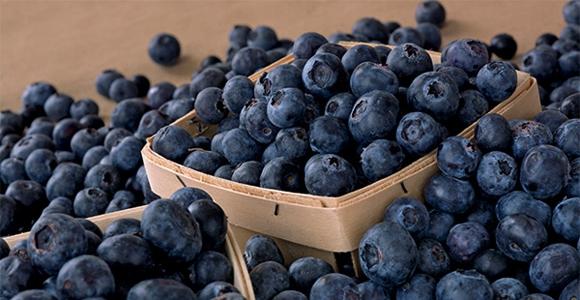From a gardening standpoint, blueberries are fairly easy to grow. If you can grow azaleas, you can grow blueberries. Depending on who’s counting, there are about 450 species of Vaccinium in the world. Most of these different blueberries grow in the Northern hemisphere and a number of them grow in North America. Man has used blueberry as a food source since before recorded history. In fact a good portion of the annual production in some areas still comes from berries harvested in the wild.
Two species of lowbush blueberry, V. angustifolium and V. mytilloides are still harvested in the wild in the United States. These species are also cultivated in places like Maine and Michigan. The flavor of lowbush blueberries is said to be superb. The Northern highbush blueberry, V. corymbosum, is the most commonly cultivated type of blueberry in the United States. A good portion of the production comes from the Northeast and the Pacific Northwest. Northern highbush will grow and produce on elevated sites as far south as Alabama. The most commonly planted blueberry in the Southeast is the rabbiteye, V. ashei. Like a lot of other fruits that grow well in the Deep South, the rabbiteye is a true Southern native. Vast areas of the Southern woodlands are covered by wild rabbiteye blueberries.
Along the Gulf Coast, many acres are being planted to Southern highbush blueberries. This is a hybrid, primarily between Northern highbush and V. darrowi, as well as other species. The Southern highbush was bred to incorporate the superior fruit characteristics of the Northern highbush with the heat tolerance and low chilling requirement of the other species. The Southern highbush is a very temperamental plant and needs special care and attention to grow. Some growers actually plant them on raised beds of pure organic matter and irrigate them. This special attention results in a high quality berry that can be grown father south and harvested a little earlier than rabbiteye.
Regardless of the species, one thing all blueberries have in common is a love of organic matter. When planting blueberries, it is important to incorporate some organic matter into the planting hole. This can be peat moss, compost or fine pine bark. After planting, it is a good idea to mulch the plants. Container grown blueberries can be planted locally from October through March. Bare root blueberries have the best chance of living when planted from December through February.
Fertilizing blueberries is a little tricky. They can not tolerate the nitrate form of nitrogen, therefore many of the commonly available fertilizers are not suitable. Ammonium forms of nitrogen such as urea or ammonium sulfate are better. There is no substitute for a soil test for determining the other elements that are needed. Also, blueberries need to be grown on acidic soil. In reality, you are far more likely to kill blueberry plants with fertilizer than with anything else.
Once the plants are in the ground, it would be a good idea to prevent them from fruiting for the first couple of years by pulling the young fruit off. That way, all of the energy the plant makes goes into establishment rather than producing a fruit crop.
Another thing to be aware of is that blueberries usually bloom very early in the spring and are subject to late spring frosts. Newer cultivars of rabbiteye blueberry such as Alapaha, Ochlockonee, Vernon and DeSoto bloom a little later than older cultivars such as Tiftblue, Climax and Premier.
Reference:
Chapman, Doug. Blueberries Are Easy to Grow. March 2006. Retrieved 20 Sept. 2010.
